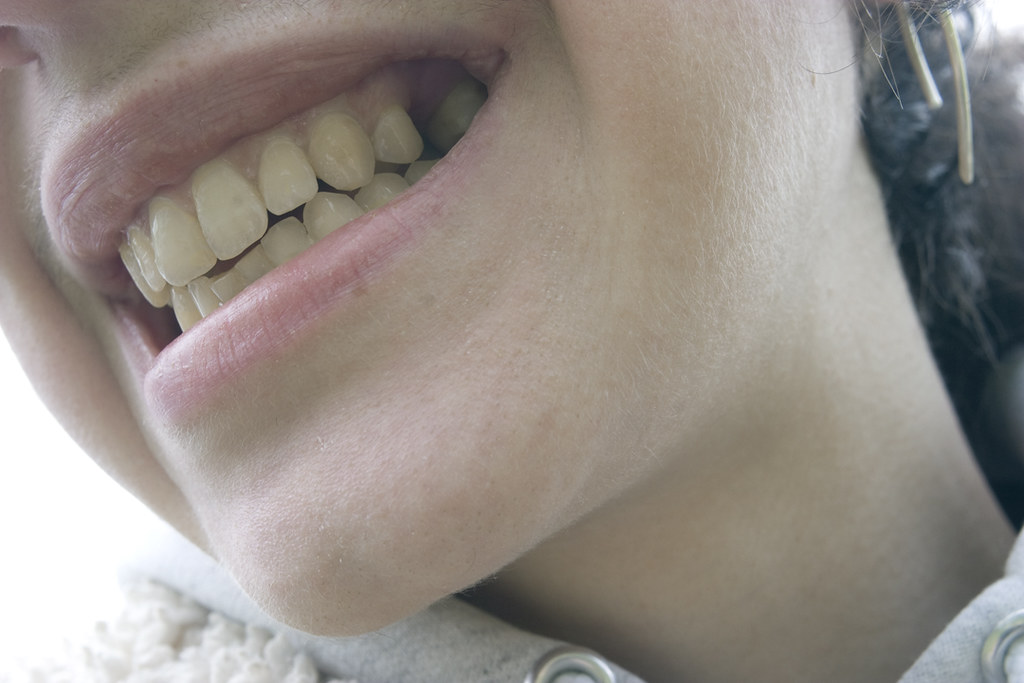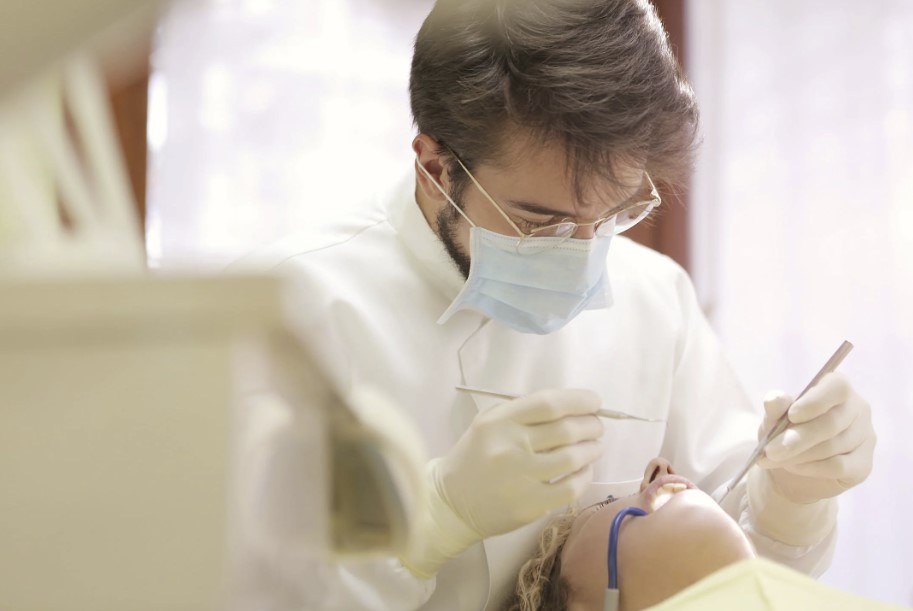How To Treat Gum Disease At Home?
Fortunately, you can treat gum disease at home without surgery and encourage your body to regenerate lost bone and tissue instead of requiring surgery. You can use this method even if your gum disease has reached an advanced stage. You will see remarkable results as long as you still have your teeth. There are numerous causes of gum diseases. You will need to understand the following tools & practices before you can begin your regimen:
The Right Toothbrush
A healthy mouth begins with a healthy toothbrush. Electrical toothbrushes and manual toothbrushes are the two types of toothbrushes you can find today. Whichever type you choose, make sure the model you choose keeps you motivated to keep your mouth clean. The key to choosing a toothbrush head is to make sure it can reach all surfaces of your teeth. An ideal head measurement is one inch long and half an inch wide.
Having the best movement allows you to clean your mouth thoroughly even in the farthest corners. When you have sensitive gums, you should choose a toothbrush with soft bristles. In order to clean the teeth gently, the tips should be slightly rounded. Consider the toothbrush head’s bristles carefully. Replacements should be purchased as soon as they fray! It is recommended that you replace your toothbrush every three months as a good rule of thumb. By doing this, you can be assured that you’ll always get a good clean. Avoid bacteria by changing your toothbrush frequently.
Is it electric or manual?
As far as cleaning capacity is concerned, there is no real difference between electric toothbrushes and manual ones. Those with motor function problems, however, are better off using electric toothbrushes. Those suffering from arthritis, for instance, may find electrical toothbrushes more convenient. It might be better for you to use something powered by a battery if you wear braces or have uneven teeth. It may be best to use a mechanical toothbrush if you brush vigorously to the point where bleeding occurs. Electrical toothbrushes allow you to choose the intensity of the brushing and maintain that pressure even as you clean your mouth.
Brushing your teeth properly
It is ingrained in us from an early age to take good care of our mouths and brush our teeth. Many people fail to realize that they aren’t doing this simple task correctly. It is true that not all brushing techniques are the same. Some ‘movements’ have been found to be more effective than others at removing plaque from the front surfaces of teeth. The best way to improve your wrist work with the toothbrush is to use smooth, rounded strokes.
If you use the toothbrush to make small circles on your tooth surface, you can remove more plaque and flush it out of your mouth with water. Don’t forget to brush along the gum line as well, making sure you get all areas of the teeth. Take time to brush all surfaces of your back teeth, especially the molars, as they are often overlooked. Make sure your brush reaches the back portion of your front teeth as well. You can brush your tongue without any problems. This actually improves breath freshness. The enamel on the teeth can wear down if you brush too often.
It is recommended that you brush your teeth 3 times a day for two minutes each time. During this time, you can pay close attention to each tooth and remove all plaque that may have collected there throughout the day. Ensure that you clean the gum line thoroughly by flicking the brush up and down to remove any bacteria. To avoid missing a spot during oral care, follow a brushing pattern. Be aware of where you are brushing and how long you have been cleaning that area.
Providing sufficient attention to each case would be possible this way. Make sure to brush your tongue as well since this part of your mouth is well known for accumulating bacteria. If you brush your tongue, you’ll notice that your breath will be fresher, and you’ll also feel that you have a clean mouth. The purpose of an oral irrigator is to remove food particles and bacteria from between the teeth by using an electrical device. The particles are pushed out by the gentle pressure of water and spat in the sink, protecting gums and teeth from further damage.
The Oral Irrigator
Oral irrigators are great because you can control the water pressure, which is important if you have sore gums. Setting the water pressure to mild will keep the gums from bleeding and causing pain. People with gum disease typically have sensitive gums, so a mild pressure will prevent bleeding. Furthermore, it reaches deeper pockets between the gums, flushing out bacteria that brushing could not reach. Using an oral irrigator is as simple as pointing the tip near the gum line between the teeth.
Using this method, all bacteria, dirt, and debris will be flushed outside and directed directly into the shower. Besides holding the Waterpik in place, the process only takes a few minutes to complete. You don’t have to worry about it interfering with orthodontics or other dental implants, either. With Waterpik, water and air form the main components. This allows the liquid to easily pass through the nooks and crannies, removing plaque between braces. A Water Pik oral irrigator costs about $75. There’s no reason not to invest in it.
Flossing
It is important to floss regularly. You only need the floss itself to floss, so no other equipment is needed. The only thing you need to floss effectively is a simple box of dental floss, even though there are products specially designed to make flossing easier. Plaque adhered to teeth can be scraped off with flossing. An oral irrigator may not achieve the same results when dealing with tough cases, such as kernels of corn stuck between the teeth.
Dental floss is not expensive, but if you can afford both, using both an irrigator and dental floss is highly recommended. There is one downside to flossing: it can be abrasive. In spite of bleeding gums, it is still advisable to scrape them. As you learn about your gum’s health status, you shouldn’t have any problems adjusting your grip since you have total control over the pressure. The best way to maintain healthy teeth and gums is to floss once a day at least. By scraping along the sides of each tooth, you can remove food debris and bacteria. When you use floss for the first time, you should throw it away – otherwise, bacteria may be redistributed.
This dentist who does dental implants in San Leandro CA also recommends using interdental brushes if dental floss is not up to your liking
Choosing the Right Toothpaste
Put an end to using toxic toothpaste on your teeth. The majority of commercial toothpaste contains toxic ingredients such as aspartame, sodium lauryl sulfate, sorbitol, fluoride, and glycerin. Why would toothpaste manufacturers warn you right on the label that it is not safe to swallow if they know their ingredients are toxic? Teeth can become de-mineralized when they are exposed to glycerin. There is widespread recognition that sodium lauryl sulfate is a carcinogen.
The main ingredient in toothpaste and rat poison is sodium fluoride. Artificial sweeteners saccharin, sorbitol, and aspartame cause a multitude of health problems, and yet we use them to brush our teeth. Natural toothpaste can be found at your local health store or you can make your own with baking soda and coconut oil. It won’t take you long to realize that commercial toothpaste doesn’t clean teeth nearly as well as natural toothpaste and leaves your mouth smelling bad.
Stress Reduction
The health of your gums can also be negatively affected by stress, according to studies. Study participants were divided into two groups: those exposed to high stress levels and those kept at a control level. According to the study, the stressed group had more signs of gum disease and cavities after receiving professional teeth cleaning prior to the experiment. The theory posits that stress somehow weakens the immune system, thereby facilitating the spread of bacteria in the mouth and causing gum disease. Practicing anti-stress rituals such as exercise, tea drinking, yoga, and others can help if you’re constantly stressed out about your job or personal life.
Salt Rinses
Natural teeth cleaning methods include salt rinses. A warm water and salt rinse is administered early in the morning. Especially if your gum pockets become very red as a result of gum flare-ups, this is perfect for you. Salt in water acts as a natural antiseptic, speeding up the healing process. Salt rinses are not recommended for daily use, especially if you use mouthwash already. Acid in salt can weaken teeth’s enamel over time, resulting in their appearance being weaker than they really are. The use of salt water rinses once or twice a week may provide sufficient antibacterial benefits, as well as making your breath feel fresher.
Hydrogen Peroxide Rinse
By applying hydrogen to the teeth, gum tissue is maintained while the teeth are whitened. Pure hydrogen peroxide, on the other hand, is more harmful than helpful. Hydrogen peroxide rinse is not recommended by dentists because there is a risk of dilution errors. Following the 1/3 rule is the best way to dilute the material if you are confident in your ability.
In essence, you will need to combine 1/3 water, 1/3 hydrogen peroxide, and 1/3 Listerine. Dilution is sufficient to ensure safe and effective use of the rinse. The dangers associated with improper hydrogen peroxide mixes are eliminated today because hydrogen peroxide rinses come in diluted forms. The brown bottles of hydrogen peroxide that you can purchase at the grocery store contain food-grade hydrogen peroxide. If you wish, you can also use the above-given mix to add hydrogen peroxide to your water. If you do this, the water can be aimed directly between the gums for a more thorough cleaning.
Application of Tea Bags
As well as reducing inflammation, tea bags can also help reduce the emergence of bacteria on the affected gums. The easiest way to achieve this is to prepare a strong cup of tea and apply the still soggy tea bag gently to the affected gums. After five minutes, remove it. Over the affected gum parts, you can repeat this several times. You can also drink tea to help prevent gum disease, but it can stain your teeth, so limit these drinks and stick to tea bags instead.
Smoking and drinking should be reduced
The only way to reverse gum disease is to stop smoking. Research has found that tobacco use may contribute significantly to gum disease development. Optimal results can be achieved by quitting smoking. I agree completely. If you drink, you should limit your consumption. Studies have shown that small amounts of alcohol can actually be beneficial to your health, but too much can be detrimental to your body’s ability to fight bacteria, including gum disease.
Herbal Aid
Many people around the world have been cleaning their teeth with “chewing sticks” for thousands of years. In order to treat gum disease, herbal treatments are commonly used. Turmeric, ginger, and neem are common herbal remedies. Inflammation and bacteria can be reduced with these herbs’ anti-inflammatory and anti-bacterial properties. The chewing of a fibrous stick also scrapes plaque off the teeth, and chewing sticks contain antimicrobial and antibacterial properties that kill germs before they reach the teeth.
Oral Hygiene Patterns
Is there a specific way to approach your oral hygiene schedule? An approach to the problem is suggested below. You may be able to substitute several of the recommendations here for one another. As a first step, floss between your teeth to remove large chunks of food and debris. Once the teeth are thoroughly brushed, follow up with a professional dental cleaning. Plaque and tartar will be removed from the teeth by doing this. To thoroughly clean inside your gums, use a waterpik filled with water or hydrogen peroxide. When not using a waterpik, you should rinse with salt water.







